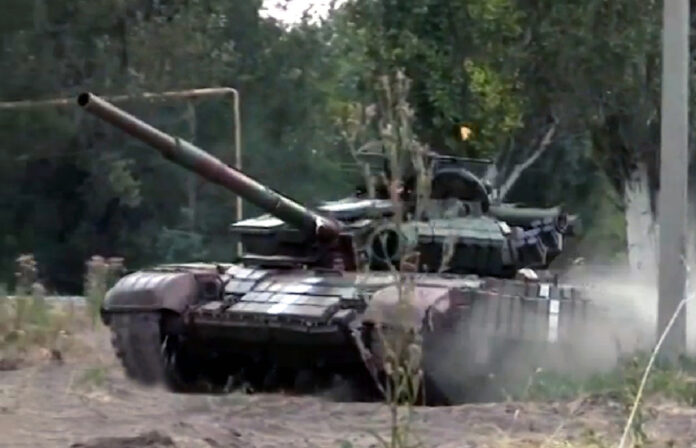Consequently to the implosion of the Soviet Union in 1989, the countries of Eastern Europe regained the political and economic independence that they had lost at the end of the World War II to the advantage of the USSR.
The long and sad Soviet interlude
Czechoslovakia, Poland, Hungary, Bulgaria, Romania, and the Baltic Republics started considering the European Union as the political and social place where it was opportune to fully return, after the long and sad Soviet interlude. Those peoples, being ethnically and historically different from the Russians, had no difficulty in distancing themselves from the Moscow empire in crisis.
The russification of the east
The Ukrainian situation was very different. Most of the population of the Eastern region had been russified for centuries . Also over time, the Ukrainian language itself had become more and more similar to Russian which had been taught in schools and used by the media. When, in August 1991, the Ukrainian Parliament proclaimed the country’s independence, the USSR military bases on the territory, nuclear weapons and the Black Sea fleet anchored in Sevastopol which had remained under Moscow’s the control.
Donbass separatists upheld by Moscow
Relations between the former USSR and Kiev immediately were under real difficulty, especially as due the Ukrainians manifested in favor of integration into the European Union and NATO. From a political and military point of view, this was a bad matter for Moscow. Actually, the Russian capital began to uphold the separatists of the Donbass area which was very rich in mines and steel industries.
Crimea ruled for the annexation to the Russian Republic
In 2014, after Ukrainian President Petro Poroshenko signed the Association Agreement between Ukraine and the EU in Brussels, the military occupation of the whole area by the separatists began. Crimea, following a controversial referendum, ruled for the annexation to the Russia.
So a bloody endless war ensued, and all attempts at pacification failed. Moscow denies its militarily supporting the separatists, despite the evidence. In the last months of 2021, the Kremlin amassed large troops near the Donbass area. This raised fears of military action aimed at the full annexation of the area.
Russia will hardly accept a further retreat
Observers, however, consider such a military operation possible, and also believe that it is a strong signal that the Kremin launches against NATO’s advance in Eastern Europe. A nuclear superpower can’t permit that NATO installs missiles a few hundred kilometers from Moscow.
The bombing of Serbia during the 1999 Kosovo war has already deprived Russia of its historic Balkan ally. The Kremlin will hardly accept a further retreat to the shores of the Black Sea – and therefore of the Mediterranean – whose access remains viable politically and economically.
Il rapporto con l’est europeo e la Russia
A partire dal 1989 con l’implosione dell’Unione Sovietica i Paesi dell’Europa orientale riconquistarono l’indipendenza politica ed economica perduta alla fine della seconda guerra mondiale a vantaggio dell’Urss.
Il lungo e triste interludio Sovietico
Cecoslovacchia, Polonia, Ungheria, Bulgaria, Romania, Repubbliche Baltiche incominciarono a guardare all’Unione Europea come allo spazio politico e sociale in cui rientrare a pieno diritto, dopo la lunga e triste parentesi sovietica. Etnicamente e storicamente distinti dai russi questi popoli non ebbero alcuna difficoltà a prendere le distanze dall’impero moscovita in crisi.
La russificazione dell’est
Molto diversa fu la situazione ucraina. Una parte consistente della popolazione dell’est del Paese era stata russificata da secoli. Inoltre la stessa lingua ucraina era divenuta nel corso del tempo sempre più simile al russo, essendo insegnata nelle scuole e utilizzata dai media.
Quando, nell’agosto del 1991, il Parlamento ucraino proclamò l’indipendenza del Paese, le basi militari dell’Urss sul territorio, gli armamenti nucleari e la flotta del Mar Nero ancorata a Sebastopoli rimasero sotto il controllo di Mosca.
I separatisti del Donbass ed il loro supporto da parte di Mosca
I rapporti fra l’ex Urss e Kiev si rivelarono subito difficili, soprattutto per il dichiarato orientamento della popolazione. Gli Ucraini sono infatti largamente a favore dell’integrazione nell’Unione Europea e nella Nato. Sotto il profilo politico e militare ciò era inaccettabile per Mosca, che prese a supportare i separatisti dell’area del Donbass, ricchissima di miniere e industrie siderurgiche.
L’annessione della Crimea alla Federazione Russa
Nel 2014, dopo che il Presidente ucraino Petro Porošenko a Bruxelles ebbe firmato l’Accordo di associazione tra l’Ucraina e l’UE, iniziò l’occupazione militare di tutta la zona da parte dei separatisti. La Crimea, a seguito di un discusso referendum, si pronunciò per l’annessione alla Russia.
Ne è seguita una guerra sanguinosa che dura ancora oggi, di fronte alla quale sono falliti tutti i tentativi di pacificazione. Mosca nega di sostenere militarmente i separatisti malgrado l’evidenza. Negli ultimi mesi del 2021 il Cremlino ha ammassato ingenti truppe vicino all’area del Donbass, facendo temere un’azione militare finalizzata alla piena annessione della zona.
La posizione ferma della Russia
Tuttavia gli osservatori, pur considerando possibile tale operazione militare, ritengono che essa sia un segnale forte del Cremlino nei confronti dell’avanzata della Nato nell’Europa dell’Est. Subire l’installazione di missili Nato a poche centinaia di chilometri da Mosca è inaccettabile per una superpotenza nucleare.
I bombardamenti sulla Serbia in occasione della guerra del Kosovo del 1999 hanno già privato la Russia del suo storico alleato balcanico. Difficilmente il Cremlino accetterà un’ulteriore ritirata sulle rive del Mar Nero – e quindi del Mediterraneo – il cui accesso rimane vitale politicamente e economicamente.








